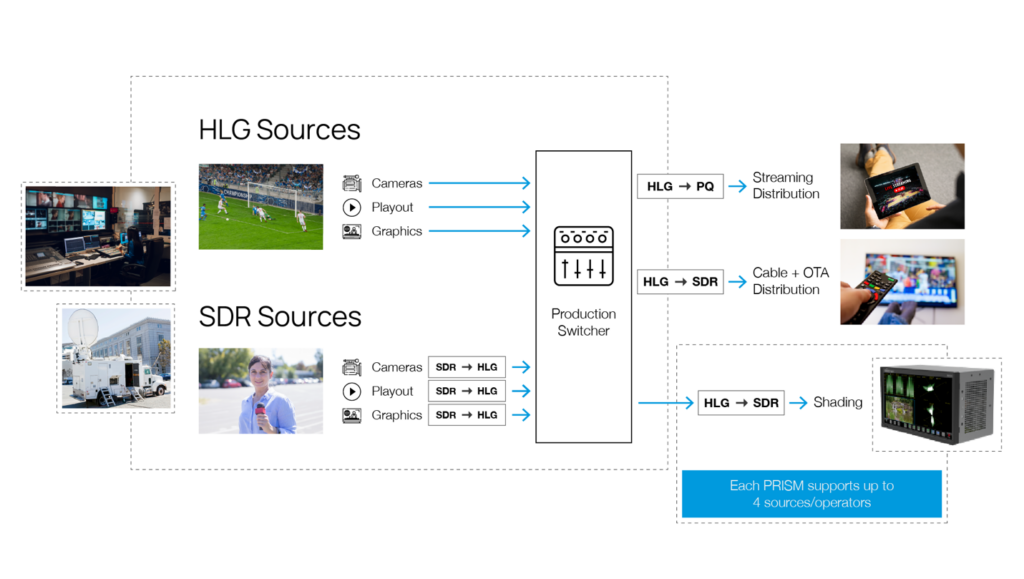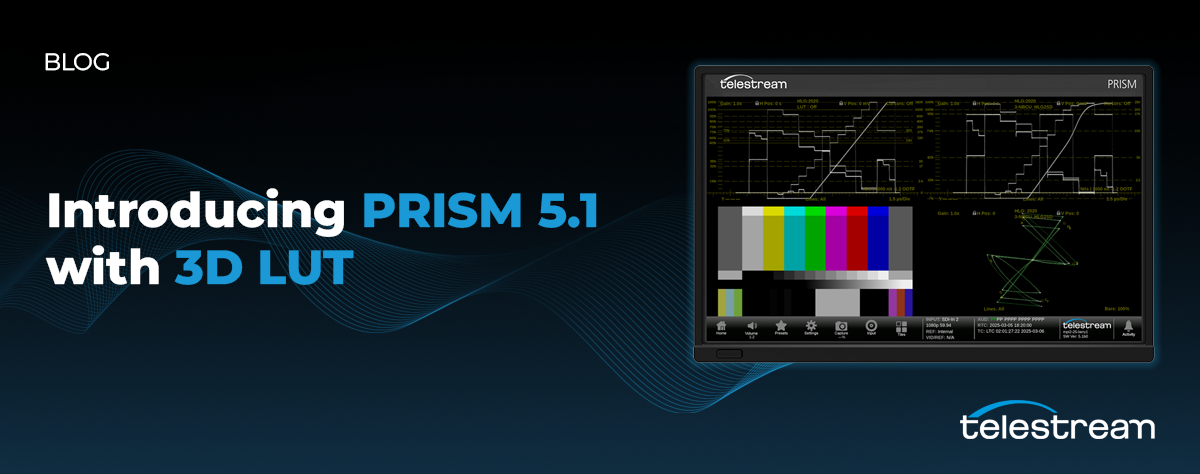The demand for live production is growing as OTT technology has matured, allowing end viewers with easy access to content anytime, anywhere. Viewers are now eager for a high-quality, pseudo-live experience, even on mobile devices.
In this context, simultaneous HDR/SDR broadcasting has become essential for high-value live productions, catering to both emerging HDR audiences and established SD/HD viewers. While an ideal HDR/SDR simultaneous production setup would involve separate HDR and SDR cameras, this approach doubles equipment and operator costs for daily production, making it impractical. A more cost-effective approach is the combination of HDR cameras and 3D LUT conversion, which has become widely adopted in HDR/SDR simulcasting workflows.

Challenges in HDR/SDR Simulcasting with 3D LUT Boxes
In typical HDR/SDR simulcast live production, all SDR content (such as archived footage and commercials) is upconverted to HDR. Subsequently, all HDR sources are fed into a production switcher for composition. The HDR output feed from the switcher is then converted to distribution formats. However, this process requires 3D LUT conversion units for every conversion, complicating the system and driving up costs. This is especially challenging at the camera shading position, where the same number of 3D LUT boxes as shading operators or monitoring sources are required.
Integrated 3D LUT in PRISM
PRISM SDI/IP waveform monitor now features an integrated, user-configurable 3D LUT, with a 33x33x33 cube size and tetrahedral interpolation for precise processing. The 3D LUT can be applied to various display modes (Waveform, Vector, Diamond, and Lightning), with the ability to toggle it on or off for each tile. Additionally, the multi-input mode allows operators to apply different 3D LUT tables for each input.
Shading operators are usually well-versed in working with SDR cameras but may be less familiar with HDR cameras. The integrated 3D LUT in PRISM enables them to compare SDR signals converted from HDR sources, allowing them to balance various camera inputs. This eliminates the need for operators to learn new techniques for shading HDR signals, allowing them to work quickly and confidently.
With the capability to monitor up to four inputs simultaneously in SDI/IP, UHD/HD, or HDR/SDR formats, the technical director can confidently ensure the balance between HDR/2020 and SDR/709 signals. Side-by-side trace comparisons provide a clear overview of the contribution link signals. Additionally, they can apply the 3D LUT to signals to ensure proper transcoding across signal paths.
Simplifying Workflow and Reducing Costs
Integrating 3D LUT functionality into PRISM streamlines the workflow, reduces costs, and simplifies the camera system. This empowers users to efficiently broadcast both HD/SDR and UHD/HDR content simultaneously. By consolidating crucial monitoring and conversion tools, PRISM reduces equipment needs and operational complexity, allowing broadcasters to focus on delivering exceptional live productions.
Discover how PRISM can transform your HDR/SDR production workflows. Visit our website page to learn more.
PRISM customers can download version 5.1 with 3D LUT and additional new enhancements from the PRISM resources page.

